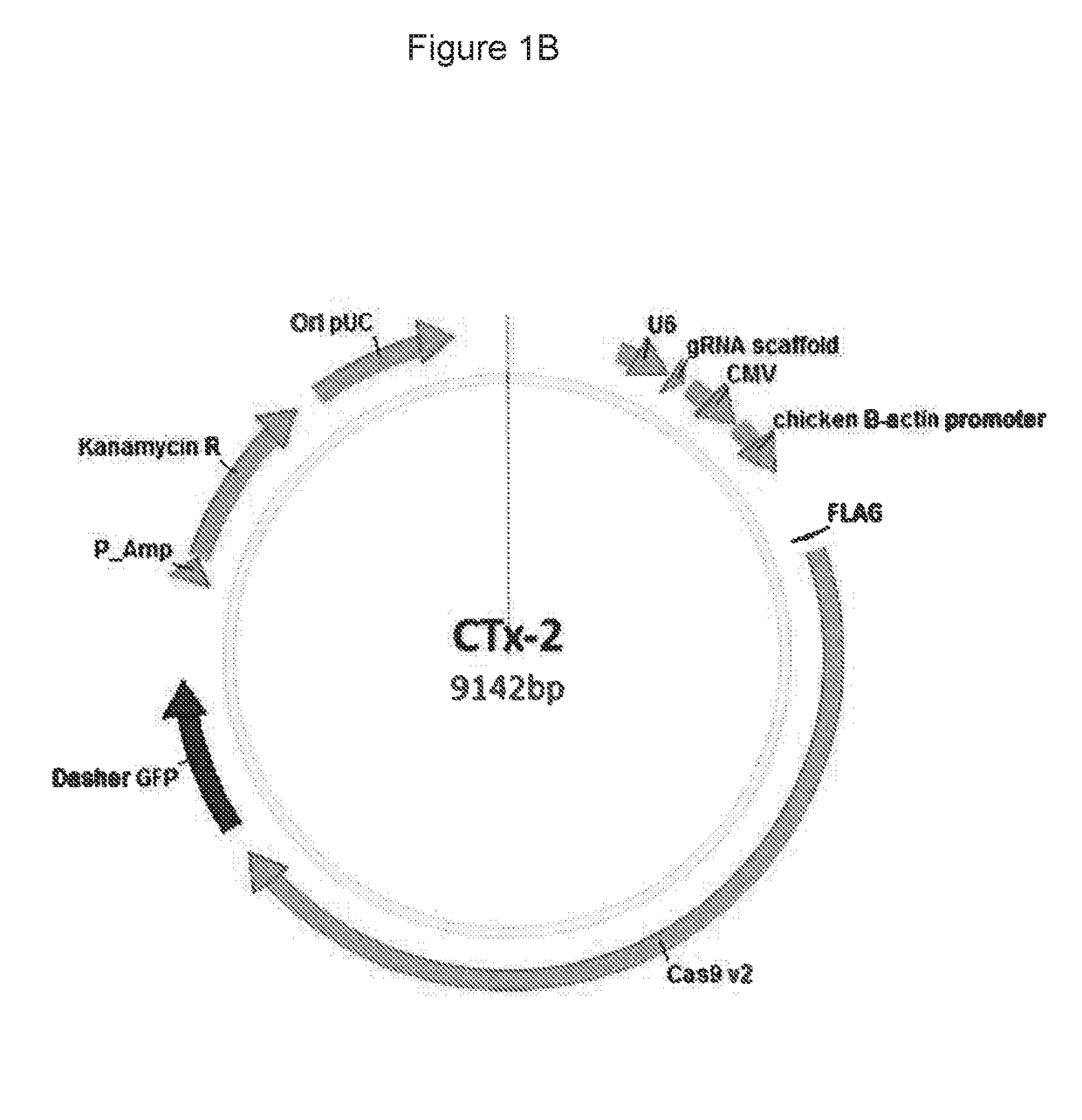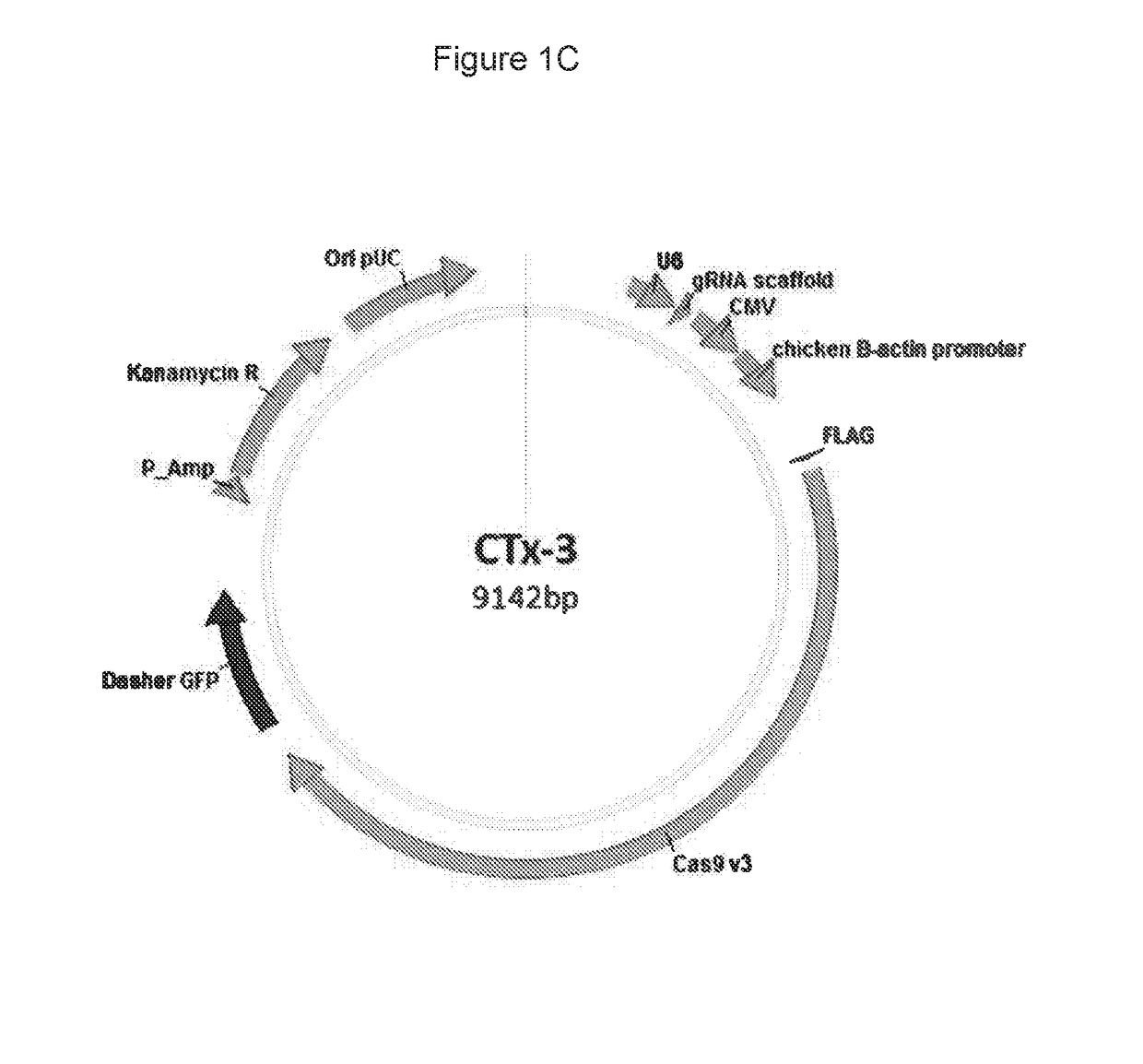Materials and methods for treatment of alpha-1 antitrypsin deficiency
a technology of alpha-1 antitrypsin and material and method, which is applied in the direction of genetic material ingredients, drugs, viruses/bacteriophages, etc., can solve the problems of inability to address the lack of normal aat in the circulation, early technologies developed to insert a gene into a living cell, such as transgenesis, are often limited, inactivated or disturbed the functioning of other genes, etc., to facilitate the insertion of a new sequen
- Summary
- Abstract
- Description
- Claims
- Application Information
AI Technical Summary
Benefits of technology
Problems solved by technology
Method used
Image
Examples
example 1
Cas9 Target Sites for the SERPINA1 Gene (Other than as a Safe Harbor Locus)
[0609]Regions of the SERPINA1 gene were scanned for target sites. Each area was scanned for a protospacer adjacent motif (PAM) having the sequence NRG. gRNA 20 bp spacer sequences corresponding to the PAM were identified, as shown in SEQ ID NOs: 54,860-61,324.
example 2
Cas9 Target Sites for the SERPINA1 Gene (Other than as a Safe Harbor Locus)
[0610]Regions of the SERPINA1 gene were scanned for target sites. Each area was scanned for a protospacer adjacent motif (PAM) having the sequence NNGRRT. gRNA 20 bp spacer sequences corresponding to the PAM were identified, as shown in SEQ ID NOs: 61,324-61,936.
example 3
Cas9 Target Sites for the SERPINA1 Gene (Other than as a Safe Harbor Locus)
[0611]Regions of the SERPINA1 gene were scanned for target sites. Each area was scanned for a protospacer adjacent motif (PAM) having the sequence NNAGAAW. gRNA 20 bp spacer sequences corresponding to the PAM were identified, as shown in SEQ ID NOs: 61,937-62,069.
PUM
| Property | Measurement | Unit |
|---|---|---|
| Digital information | aaaaa | aaaaa |
| Density | aaaaa | aaaaa |
| Protein activity | aaaaa | aaaaa |
Abstract
Description
Claims
Application Information
 Login to View More
Login to View More - R&D
- Intellectual Property
- Life Sciences
- Materials
- Tech Scout
- Unparalleled Data Quality
- Higher Quality Content
- 60% Fewer Hallucinations
Browse by: Latest US Patents, China's latest patents, Technical Efficacy Thesaurus, Application Domain, Technology Topic, Popular Technical Reports.
© 2025 PatSnap. All rights reserved.Legal|Privacy policy|Modern Slavery Act Transparency Statement|Sitemap|About US| Contact US: help@patsnap.com



